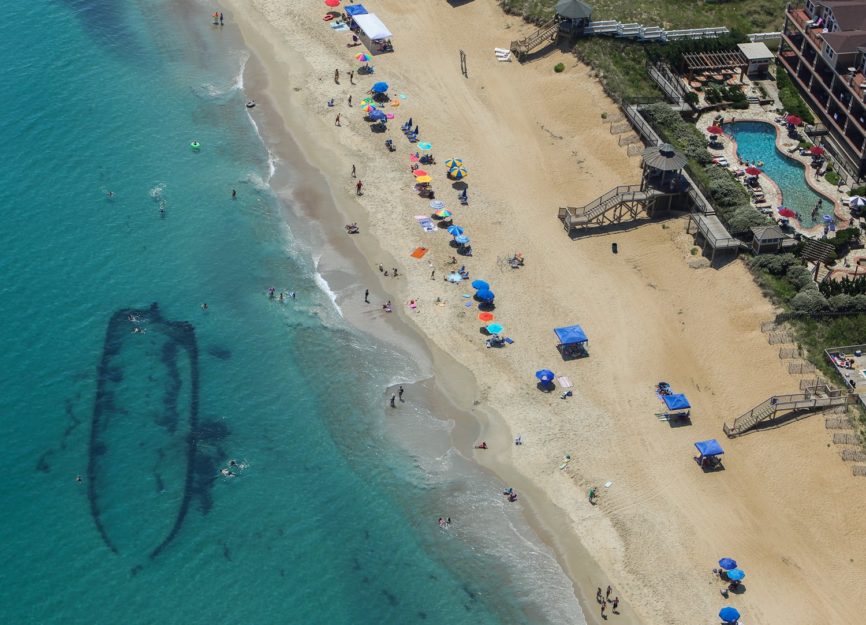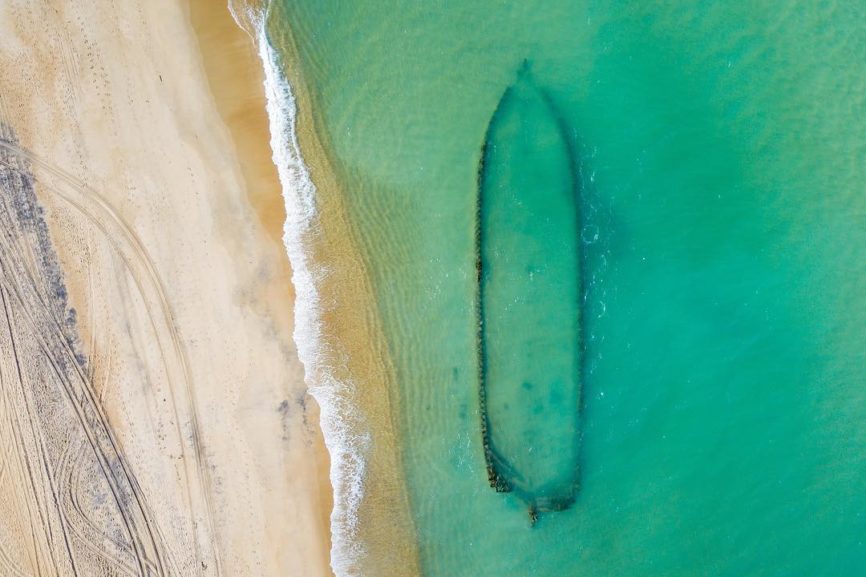When the three-masted schooner Irma ran aground in Kill Devil Hills in 1925, she became one of a popular site to visit on the Outer Banks. With her stern driven into the sand, the ship was part of the beach for five or six years until storms in 1931 began to break the ship up.
The Irma was certainly a tourist attraction, at least she was according to a young David Stick writing for the Dare County Times in June of 1938.
“Since the first tourists drove over Dare County’s Ocean Highway the wreck of the Irma has been a favorite stopping place for visitors. With her stern rising up high on the beach and what remains of her bow dipping into the successive breakers she made a picture that seemed to coincide with her surroundings,” he wrote.

Stick would go on to write “Graveyard of the Atlantic,” considered by many to be the best book written on the shipwrecks of the Outer Banks. The book was published in 1952 and is still in print even today.
In 1938 when his article appeared, Stick was 18 years old and was just beginning his career as a writer. He was probably writing for more than one paper. On a number of occasions, he said his first writing experience was with the Elizabeth City Daily Advance.
By the time he published Graveyard of the Atlantic, his writing was much more polished, something he would readily agree was the case. Much of the fine-tuning happened in the South Pacific in WWII, when he was a correspondent for the Marines.
Nonetheless, there are still elements of what made David such a popular author.
One thing is certain—he knew how to tell a good story.
In his article, which is titled, The Old Irma’s Bones are Scattered Along the Beach, he puts some detail into the story of the shipwreck.
In his later writings, David would probably have more detail than he provides here. However, there are still some wonderful details about the ship and why it ran aground.
“Bound south to Georgia for a load of pine the Irma ran into a storm off the Virginia Capes on the night of April 28, 1928,” he wrote.
Running with the wind behind her and no cargo to slow her down, the Irma was making good time to Georgia. The master of the ship was “…confident that he was at least fifty miles off the shore…” Stick wrote.
He was wrong.
“Patrolling the beach a mile north of the Kill Devil Hills station at 1:45 on the morning of April 29, 1929, coast guardsman Marvin Midgett sighted a three-masted schooner aground not far from shore,” Stick reports.
“Hurrying back to the station, Midgett roused the Kill Devil guardsmen and at 2:45 they arrived at the wreck,” he continues.
Evidently, seeing the Irma beached at Kill Devil Hills caught everyone off guard.

“It was as much surprise for the master and his crew as it had been for Midgett and the other Kill Devil Hill guardsmen to find the Irma hard aground on the Dare County banks at 1:45 (in the morning),” Stick notes.
No one died when the Irma ran aground. The rescue went pretty quickly taking about an hour. “…and 45 minutes later the survivors of the ill-fated Irma were drinking hot coffee in the kitchen of the station.”
The Irma, though, could not be refloated. Sold at auction, she was stripped of anything of value and left to her fate.
Well-founded and of sturdy construction, it took a while for the pounding of the surf to take its toll, but finally, in 1931, a series of storms began to break the ship apart.
The remnants of the Irma will reappear from time to time just north of the Asheville Beach Access in Kill Devil Hills. Bits and pieces of the ship seem to migrate south to the beaches of Nags Head as well.
